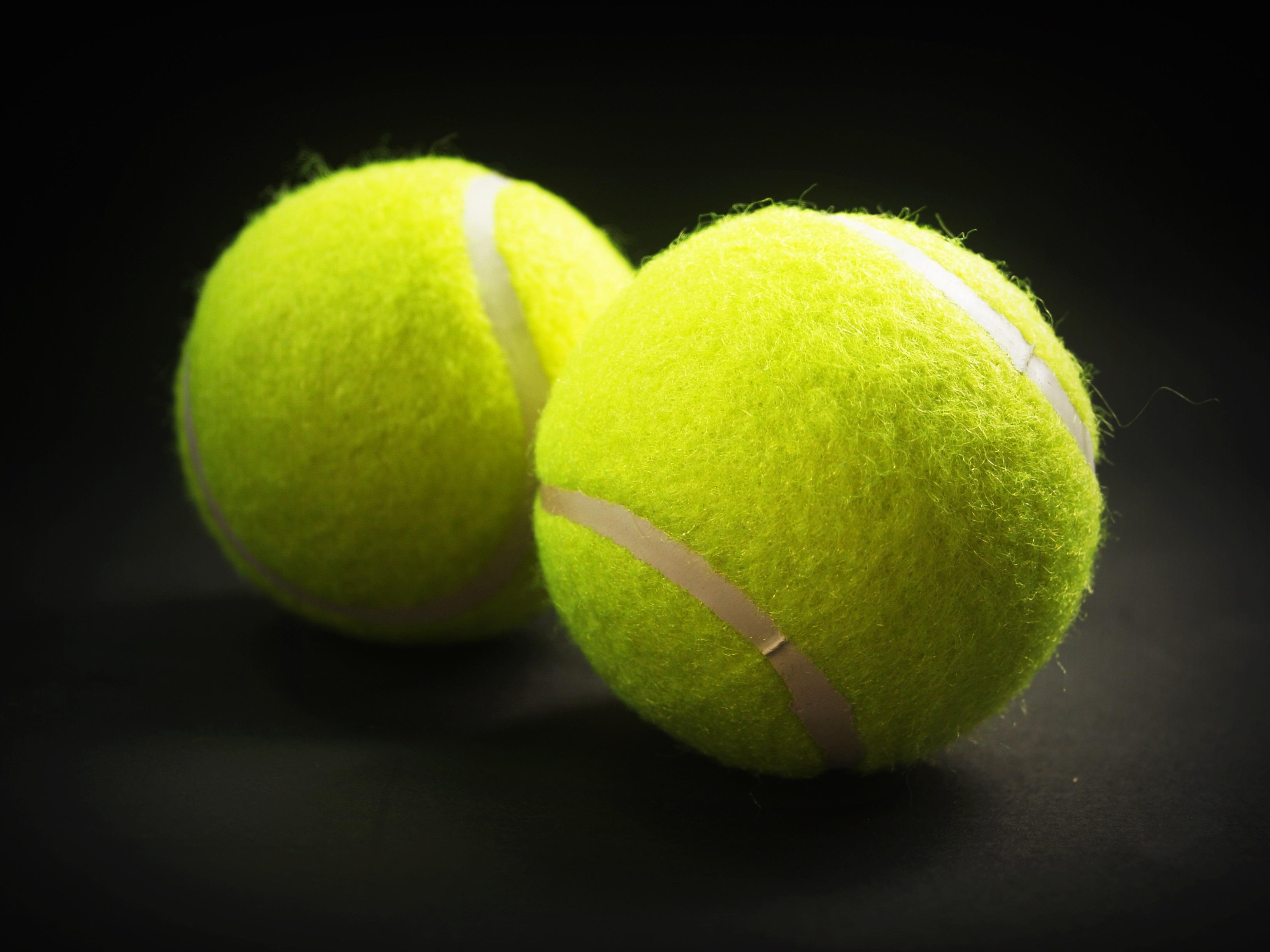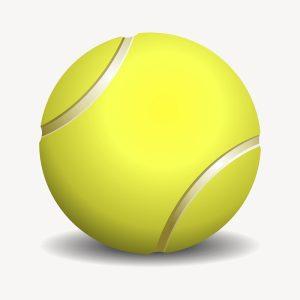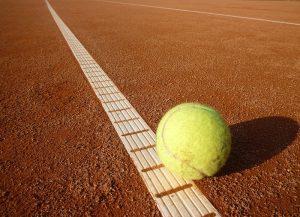We may earn money or products from the companies mentioned in this post.
of the article
The Fascinating History of Tennis Balls

Have you ever wondered about the origins of tennis balls? These small, fuzzy spheres have been a crucial part of the sport for centuries In fact, early versions of tennis were played with balls made from leather stuffed with hair or wool It wasn’t until the 19th century that rubber was introduced as a material for tennis balls
By the 20th century, tennis balls had evolved into their modern form – a hollow rubber core covered in felt This design provided better bounce and durability than earlier models Today, tennis ball manufacturers continue to innovate and improve upon this classic design
The Importance of Understanding Tennis Ball Usage
If you’re an avid tennis player or coach, it’s essential to understand the different types of tennis balls available and how they can impact your game Factors such as ball speed, bounce height, and spin can all be influenced by the type of ball used
Pressure:
The pressure inside a tennis ball affects its bounce height and speed High-pressure balls are faster and bounce higher than low-pressure ones
Type of Felt:
Different types of felt can affect how much spin a ball produces Balls with rougher felt tend to produce more spin than those with smoother felt
Bounce:
The altitude at which you play can also influence how your ball bounces At high altitudes, where there is less air resistance, balls tend to fly farther and travel faster through the air
In conclusion, understanding the history and usage of tennis balls is essential for any serious player or coach By knowing these factors, you can choose the right type of ball to suit your game and help you perform at your best
Factors affecting the number of tennis balls used in a match

Tennis is an exciting sport that relies heavily on the quality and quantity of tennis balls used during a match The number of balls used can vary depending on several factors, including the level and type of competition, the match format and duration, court surface type and conditions, and weather conditions
Level and type of competition
The level and type of competition significantly impact the number of tennis balls used in a match In amateur matches, players tend to use fewer balls as they often pause between points to retrieve them themselves However, in professional tournaments such as Grand Slam events or ATP and WTA tournaments, ball kids collect the balls for players increasing their usage
Match format and duration
The format and duration of a match also affect how many tennis balls are required Best-of-three sets matches consume less than best-of-five sets matches because there are fewer games played Additionally, singles play requires fewer tennis balls than doubles play due to having only two players playing at once instead of four
Court surface type and conditions
The court surface plays an essential role in determining how many tennis balls are needed during a game Hard courts (indoor or outdoor), clay courts or grass courts all have different characteristics that influence ball wear-and-tear rates For example, hard courts tend to wear down faster than clay or grass surfaces which can cause more frequent ball changes necessary
Weather conditions
The weather has an enormous impact on ball performance during a game Temperature affects how fast the ball travels through the air while humidity impacts its durability – both influencing how frequently new ones are required
Tennis Ball Rotation and Replacement during Matches

Standard Replacement Intervals in Professional Matches
In professional tennis matches, the replacement of balls is governed by strict regulations set by the ATP, WTA, and IT According to these regulations, a new set of balls must be used after every nine games in men’s matches and every eleven games in women’s matches Additionally, the balls must be replaced after the end of each set
Grand Slam tournaments have their own specific rules for ball changes At Wimbledon, for example, a new set of balls is used at the start of each match, while at other Grand Slams a new ball is introduced after seven games instead of nine or eleven
Player Preferences Regarding Ball Selection
Players often have specific preferences when it comes to choosing the type of tennis ball they play with Some players prefer newer balls as they are livelier and provide more spin, while others may opt for older ones that have lost some pressure but offer greater control
The choice of ball can also impact serving performance Many players prefer to serve with new or preferred balls as they feel it gives them an advantage in terms of speed and accuracy However, this can vary depending on individual player style and court conditions
Differences in ball preferences can also be seen across different levels of play For instance, recreational players may not notice or care about differences between types of balls whereas professionals are highly attuned to these nuances and insist on using specific brands or models
Extraordinary Circumstances Leading to Additional Ball Usage
In rare cases where there are long rallies or extended tie-breakers that result in significant wear and tear on the tennis balls being used during a match, additional sets may need to be brought out and rotated in This is not a common occurrence, but it does happen from time to time
In conclusion, the rotation and replacement of tennis balls during matches is an essential part of the game that can impact player performance and experience By adhering to standardized rules and being mindful of individual preferences, players can ensure they are using the best possible equipment for their style of play
Conclusion: Estimating Tennis Ball Usage in Various Scenarios

Summary of Factors Influencing the Number of Tennis Balls Used
Tennis is a sport that involves a high level of physical activity and requires players to use specific equipment, including tennis balls The number of tennis balls used during a match depends on several factors, such as the level of play, the court surface, weather conditions, and player preferences
Players who hit harder or use more spin will wear out tennis balls faster than those who hit with less power or spin Court surface also plays a role in ball usage since clay courts tend to wear out balls faster than hard courts Finally, weather conditions can affect how long tennis balls last as well In hot and humid conditions, for example, tennis balls may lose their bounce more quickly
Case Examples Illustrating Different Levels of Tennis Ball Consumption During Matches
To illustrate how different scenarios can impact the number of tennis balls used during matches, consider these examples:
Professional Match:
During professional-level matches where players hit with incredible power and spin on hard courts while playing in front of large crowds under bright lights, it’s not uncommon for players to go through 6-8 cans (18-24 individual balls) or more per match
Casual Match:
In contrast, casual players hitting on a backyard court at home may only need one can (three individual balls) for several hours of play over multiple sessions
Training Session:
During training sessions where coaches are working with young players learning basic strokes and footwork drills on clay courts under ideal weather conditions with minimal power or spin involved in each shot – only one or two cans (three to six individual balls) may be needed
By understanding the factors that influence tennis ball usage and considering different scenarios, players can make informed decisions about how many balls they need to bring to each match or practice session
Useful Links

Wimbledon Facts – Starts on 1 July and runs until 14 July
Here’s why Wimbledon uses 55000 tennis balls a year
The keepers of the tennis balls
5 amusing facts about the Wimbledon tennis event
Roland-Garros 2023: how many tennis balls are used …
Why Do They Get New Balls In Tennis? – The Racket Life
Ever wondered how many tennis balls are used at Wimbledon?
How many balls do they use at the US Open?
When Are New Balls Used In Tennis?
Facts and Figures / FAQ – The Championships, Wimbledon
How Many Tennis Balls Are Used in a Match: All You Need To …
How many balls are used at the US Open?
Tennis ball
4 Kinds Of Tennis Balls That You Had No Clue About
What are the best tennis balls for each surface?
Definition, Examples, and Common Questions About The Ball
How many tennis balls are used at the Aus Open? – Facebook
Interview Question: “How Many Tennis Balls Fit in a Limo?”
Tennis Ball Buying Guide
Wimbledon 2022: How many tennis balls are used and …






